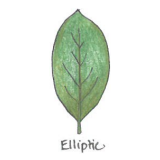Plants by mail order since 1984, over 4100 plants online today
Nursery & Gardens open: Mon - Sat 8:30 - 17:00 & Sun 10:00 - 16:00
Pop up café: open weather dependent
- Shop Now
- Burncoose Specialities
- This Month
- Offers & Promotions
- RHS Chelsea Flower Show 2024
- 40 years at Burncoose
- Engage With Us
- Information, Help & Advice
- About Us & Our Services
- Terms & Conditions
- Log In / Register

PRUNUS lusitanica
Commonly known as Portugal laurel
LAURELS
Long racemes of scented white flowers
Further Reading....
-
EvergreenGlossy, ovate to elliptic, dark- green, red-stalked leaves to 12cm (5in) long.
-
 White
White -
 Height15m (49ft)
Height15m (49ft) -
 Spread15m (49ft)
Spread15m (49ft) -
HedgeIdeal for hedging
-
Tall ShrubDense, bushy shrub. Produces flowers 1.5cm (½in) across in slender ascending, spreading or pendent racemes to 25cm (10in) long in early summer followed by ovoid, cherry-like red fruit 1cm (½in) across, ripening to black.
-
 Hardy - cold winterHardy in most places throughout the UK even in severe winters. May not withstand open/exposed sites or central/northern locations. Plant can withstand temperatures down to -15°C (5°F)
Hardy - cold winterHardy in most places throughout the UK even in severe winters. May not withstand open/exposed sites or central/northern locations. Plant can withstand temperatures down to -15°C (5°F) -
 Full sun
Full sun -
 Partial shade
Partial shade
PRUNUS lusitanica
- Details
- Description
- Mature Size
- Tips and Advice
- Goes Well With
- Planting Combinations
- Other Suggestions
- See Also...
-
Additional FeaturesBerriesThese plants have berries.
 Good to knowWildlife plant. Flowers for bees and other insects. Berries for birds
Good to knowWildlife plant. Flowers for bees and other insects. Berries for birds Pests & DiseasesGenerally trouble-free
Pests & DiseasesGenerally trouble-free Place of originSouthwestern EuropeResistant to honey fungusThese plants have little or few problems with honey fungus.
Place of originSouthwestern EuropeResistant to honey fungusThese plants have little or few problems with honey fungus. -
Flower ShapeCup-shaped
-
HardinessFully hardy
-
Leaf margin
 Serrulate
Serrulate(see photos above) -
Leaf shape
 Elliptic
Elliptic(see photos above)  Ovate
Ovate(see photos above) -
Pruning group
 Pruning group 5Suitable for: Evergreen shrubs that require minimal pruning.
Pruning group 5Suitable for: Evergreen shrubs that require minimal pruning.
Action: Trim or lightly cut back shoots that spoil symmetry. Deadhead regularly.
When: Annually after flowering.
-
Scented PlantsScented flowers
-
Soil ConditionsFertile moist well-drained soilModerately fertile.
-
Toxic - Category C
 Harmful if eatenPeople and pets, i.e. cats, dogs, rabbits, rodents
Harmful if eatenPeople and pets, i.e. cats, dogs, rabbits, rodents -
WildlifeRabbit Resistant
Jan
Feb
Mar
Apr
May
Jun
Jul
Aug
Sep
Oct
Nov
Dec
Cold weather damage to evergreen plants
Prunus / Laurel - Growing Guide
|
15m (49ft)
|

|

|
|
15m (49ft) |










AGAPANTHUS
African blue lily, Lily-of-the-Nile, Love flower
AGAPANTHUS africanus
African blue lily, Lily-of-the-Nile, Love flower

AUCUBA japonica
Japanese laurel, Spotted laurel

FATSIA japonica
False castor oil plant
Available from £15.50

HEBE 'Blue Gem'
Available from £14.50

HUMULUS lupulus 'Aureus'
Golden hop
Available from £17.50

LATHYRUS latifolius 'Red Pearl'
Perennial pea
Available from £15.50

LAVANDULA
Lavender

LEYCESTERIA formosa 'Golden Lanterns'
Pheasant berry, Himalayan honeysuckle, Flowering nutmeg
Available from £15.50

PHOTINIA

PRUNUS
Cherry tree
PRUNUS lusitanica 'Variegata'
Portugal laurel

RHODODENDRON ponticum
Buy Varieties of PRUNUS lusitanica

PRUNUS lusitanica subsp. azorica
large, red-stalked, glossy dark green leaves
Useful extras...

Fertilisers & Feeds - Vitax
Q4 Pelleted Fertiliser
A useful fertiliser suitable for use on a wide variety of plants. Q4 provides all the nutrients and trace elements essential for vigorous growth, abundant flowering and ripening of fruit.
3 options from £6.00

Fertilisers & Feeds - Empathy
Afterplant - Grow Your Own
AFTER PLANT GROW YOUR OWN seaweed is ready to use liquid concentrate that was specially formulated be used on all edible plants.
Only £8.00

Fertilisers & Feeds - Empathy
Afterplant - Tomatoes
AFTER PLANT TOMATO FEED Liquid Concentrate with Bio stimulant is a high potash liquid concentrate containing seaweed extract, plant derived amino acids and other nutrients specifically formulated to benefit tomatoes and greenhouse plants.
Only £8.00

Fertilisers & Feeds - Empathy
Rootgrow mycorrhizal fungi
Recommended by the RHS. Contains Rootgrow™ mycorrhizal fungi. Suitable for all trees and shrubs (except rhododendrons, azaleas, heathers, cranberries and blueberries)
3 options from £3.00

Fertilisers & Feeds - Empathy
Rootgrow Ericoid mycorrhizal fungi
This specially adapted Rootgrow™ mycorrhizal fungi will boost the growth of acid-loving plants like rhododendrons, azaleas, heathers and blueberries.
It contains ericoid and arbuscular mycorrhizal fungi, which are found in poor acidic soils where ericaceous plants naturally grow.
Only £7.50

Fertilisers & Feeds - Empathy
All-purpose Seaweed Stimulant
All-purpose organic concentrated seaweed feed that is a ready to use, derived from sustainable harvested kelp, that can be used on all outdoor and indoor plants, except acid loving plants.
Perfect used in conjunction with Rootgrow™.
Only £7.50


















 Gift-wrapping available
Gift-wrapping available







